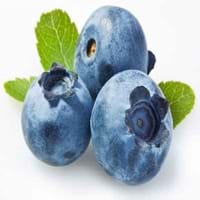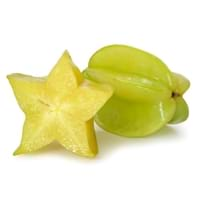Health Benefits
Anti depressant, Cancer prevention, Heart care, Increases metabolic rate, Prevents constipation
Cancer prevention, Heat stroke treatment
General Benefits
Anti oxidant properties, Controls blood pressure, Digestive aid, Eye care, Helps in weight loss, Strengthens bones
Anti oxidant properties, Anti-inflammatory properties, Digestive aid, Maintains healthy cholesterol level, Treatment of sore eyes
Skin Benefits
Anti-aging benefits, Reduces wrinkles, Skin rejuvenation, Skin revitalization, Treatment of acne, Treatment of dark spots
Anti-aging benefits, Heals sunburn, Skin rejuvenation
Hair Benefits
Promotes longer and healthier hair, Regulates hair growth
Promotes longer and healthier hair, Protects hair
Allergy Symptoms
Abdominal pains, Anaphylaxis, Breathing difficulty, Coughing, Decrease in blood pressure, Diarrhea, Eczema, Fainting, Hives, Lightheadedness, Nausea, Runny nose, Sneezing, Swelling of mouth, tongue or lips, Vomiting, Wheezing
NA
Side Effects
Affects blood glucose levels, Decrease in blood sugar levels, Allergic reaction
Nausea, Vomiting
Best Time to Eat
As a snack in the late afternoon, Eat the fresh ones, avoid mixing with any other foods, don't eat after meal., Morning time (before lunch)
As a snack in the late afternoon, Eat the fresh ones, avoid mixing with any other foods, don't eat after meal., Strictly avoid empty stomach
Vitamin B5 (Pantothenic Acid)
Vitamin C (Ascorbic Acid)
Vitamin K (Phyllochinone)
Phytosterol
Not Available
Calories in Fresh Fruit with Peel
Calories in Fresh Fruit without Peel
Not Available
Not Available
Calories in Frozen Form
Not Available
Calories in Canned Form
Not Available
Calories in Jam
Not Available
Calories in Pie
Not Available
Season
Summer
Autumn, Spring, Summer
Varieties
Pink Lemonade, Bluecrop, Bluejay, Blueray, Bonus, Duke, Elliott, Jersey, Nelson, Northland, Patriot, Sierra, Spartan, Northcountry, Northsky and Premier and Climax
King, Bell, Sri Kembangan, Arkin and Fwang Tung
Color
Blue, Indigo
Golden yellow, Green
Inside Color
Greyish-white
Yellowish Green
Shape
Round
Oval and Star(Cross section)
Taste
Sweet
Crisp, Juicy, Sweet
Origin
North America
Sri Lanka
Grows on
Trees
Not Available
Soil Type
Porous, Well-drained
Loam, Well-drained
Climatic Conditions
Cold
Moist, Warm to hot climate
Facts about
- National blueberry month is July as blueberries are harvested in July.
- They are the official berries of Nova Scotia, Canada.
- Blueberries are used as natural food color and can protect you from memory loss.
- When carambola is cut horizontally, it forms a star.
- It is believed that carambola helps to cure hangover.
- Entire carambola is edible, including its skin.
- 2 varieties of carambola are cultivated: tart & sweet.
Top Producer
United States of America
Taiwan
Other Countries
Canada, Germany, Netherlands, Poland
Australia, Guyana, India, Israel, Malaysia, Philippines, United States of America
Top Importer
United States of America
Europe
Top Exporter
Chile
Malaysia
Botanical Name
Vaccinium myrtillus
Averrhoa carambola
Synonym
Not Available
Not Available
Subkingdom
Tracheobionta
Tracheobionta
Division
Magnoliophyta
Magnoliophyta
Class
Magnoliopsida
Magnoliopsida
Subclass
Dillenhidae
Rosidae
Order
Ericales
Oxalidales
Family
Ericaceae
Oxalidaceae
Species
V. myrtillus
A. carambola
Generic Group
Heath
Not Available
Difference Between Blueberry and Carambola
We might think that Blueberry and Carambola are similar with respect to nutritional value and health benefits. But the nutrient content of both fruits is different. Blueberry and Carambola Facts such as their taste, shape, color, and size are also distinct. The difference between Blueberry and Carambola is explained here.
The amount of calories in 100 gm of fresh Blueberry and Carambola with peel is 57.00 kcal and 31.00 kcal and the amount of calories without peel is Not Available and Not Available respectively. Thus, Blueberry and Carambola belong to and category.These fruits might or might not differ with respect to their scientific classification. The order of Blueberry and Carambola is Ericales and Oxalidales respectively. Blueberry belongs to Ericaceae family and Carambola belongs to Oxalidaceae family. Blueberry belongs to Vaccinium genus of V. myrtillus species and Carambola belongs to Averrhoa genus of A. carambola species. Beings plants, both fruits belong to Plantae Kingdom.









